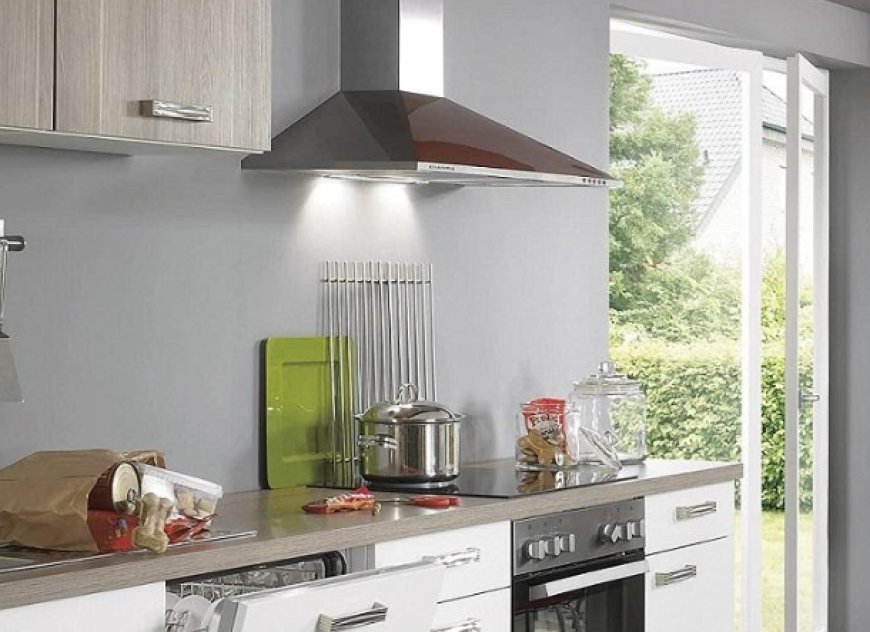Induction Hob Basics

The modern kitchen is a fascinating blend of traditional culinary art and cutting-edge technology.1 Among the innovations that have truly transformed the way we cook, the induction hob stands out as a beacon of efficiency, safety, and precision.2 Moving beyond the familiar glow of electric coils or the dancing flame of gas burners, induction cooking offers a fundamentally different approach, utilizing electromagnetic fields to directly heat cookware.3 This article delves into the basics of induction hobs, exploring their working principle, advantages, disadvantages, cookware requirements, and essential tips for getting the most out of this revolutionary appliance.
At the heart of an induction hob lies a captivating scientific principle: electromagnetic induction.4 Unlike traditional cooktops that generate heat and then transfer it to the pan, an induction hob uses an electromagnet (a coil of copper wire) beneath the glass-ceramic surface.5 When the hob is switched on, an alternating electric current flows through this coil, creating a rapidly changing magnetic field.6 If a suitable piece of ferromagnetic cookware (such as cast iron or stainless steel with a magnetic base) is placed on the hob, this fluctuating magnetic field induces eddy currents directly within the base of the pan.7 The electrical resistance of the pan then converts these eddy currents into heat, and voil your food begins to cook.8 The hob itself remains cool to the touch, with only residual heat transferred back from the hot pan.9 This direct heating mechanism is a key differentiator and the primary reason for induction's remarkable efficiency.10
The advantages of induction hobs are numerous and compelling. Perhaps the most celebrated benefit is their speed and efficiency. Because heat is generated directly in the pan, there's minimal energy loss, meaning water boils significantly faster, and cooking times are drastically reduced compared to gas or traditional electric hobs.11 This energy efficiency also translates to lower utility bills.12 Another major draw is safety. Without an open flame or glowing electric elements, the risk of accidental burns is greatly diminished.13 Many induction hobs also feature automatic pan detection, meaning they won't heat up unless a suitable pan is present, and will switch off if the pan is removed.14 The precision control offered by induction is unparalleled. Temperatures can be adjusted almost instantaneously and with incredible accuracy, akin to gas but with even finer increments.15 This makes them ideal for delicate tasks like simmering sauces or melting chocolate, as well as high-heat searing. Furthermore, the smooth glass surface of an induction hob is incredibly easy to clean.16 Spills don't bake onto a hot surface, making wipe-downs a breeze.17
However, it's also important to acknowledge the disadvantages of induction hobs. The most significant limitation is the cookware requirement. Only ferromagnetic cookware will work. This means your beloved aluminum or copper pots and pans, unless they have an induction-compatible base, will not heat up. This often necessitates an initial investment in new cookware for those transitioning from other hob types. Cost can also be a barrier; induction hobs are generally more expensive to purchase than their gas or electric counterparts, although the long-term energy savings can offset this.18 Some users also report a faint humming sound during operation, particularly at higher power settings, which is simply the vibration of the pan's magnetic particles.19 Lastly, while rare, some individuals with pacemakers are advised to consult their doctor before using an induction hob due to the magnetic fields generated.
Choosing the right cookware is crucial for unlocking the full potential of your induction hob. The easiest way to check if your existing pans are induction-compatible is to see if a magnet sticks firmly to the bottom. If it does, you're good to go! Ideal materials include cast iron, enameled cast iron, and stainless steel with a magnetic base. Many manufacturers now clearly label their products as "induction compatible".20 Investing in good quality, flat-bottomed cookware will ensure optimal contact with the induction coils and efficient heat transfer.21
To get the most out of your induction hob, here are some essential tips. Always use cookware that matches the size of the induction zone as closely as possible to maximize efficiency. While induction is powerful, starting at a lower heat setting and gradually increasing is often best, especially when you're new to it, to prevent scorching.22 Utilize the precise temperature control for simmering and delicate tasks, taking advantage of the immediate response.23 For cleaning, simply wipe down the cool surface with a damp cloth and mild detergent. Avoid abrasive cleaners that could scratch the glass-ceramic surface.
In conclusion, the induction hob represents a significant leap forward in kitchen technology. Its ability to provide rapid, efficient, safe, and precise cooking makes it an increasingly popular choice for home cooks and professional chefs alike.24 While the initial investment and cookware requirements may be considerations, the long-term benefits in terms of energy savings, convenience, and culinary control make induction hobs a truly worthwhile addition to any modern kitchen, ushering in a new era of cooking where technology and taste harmoniously converge.







































